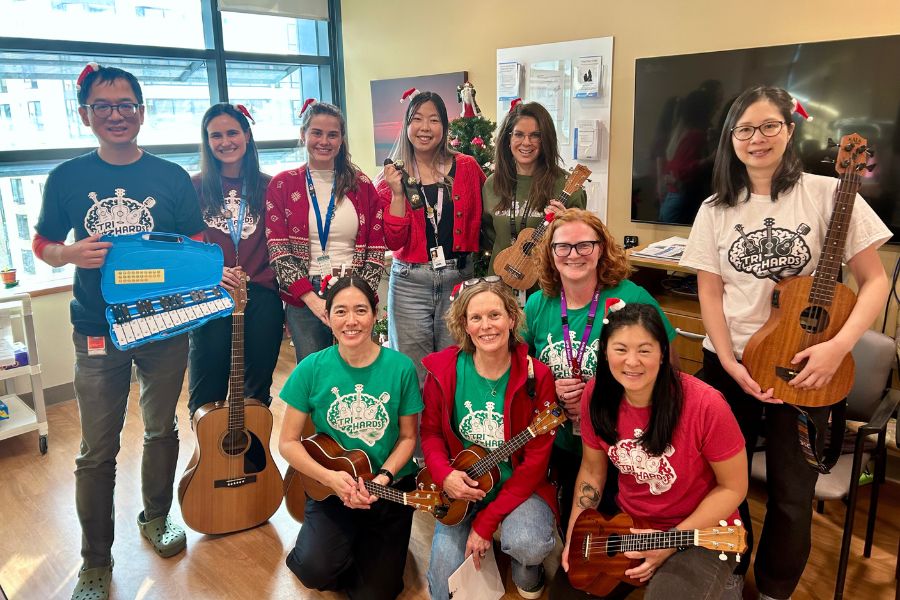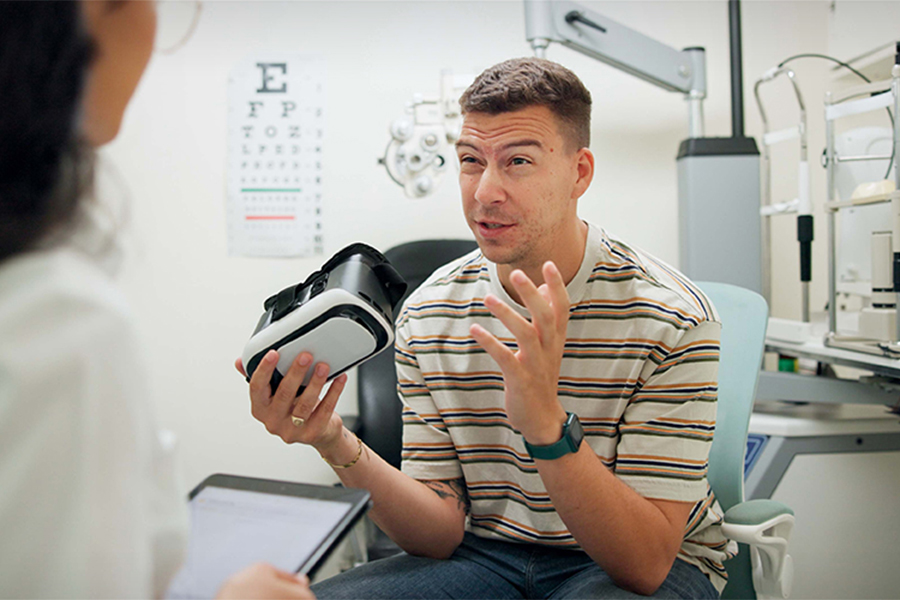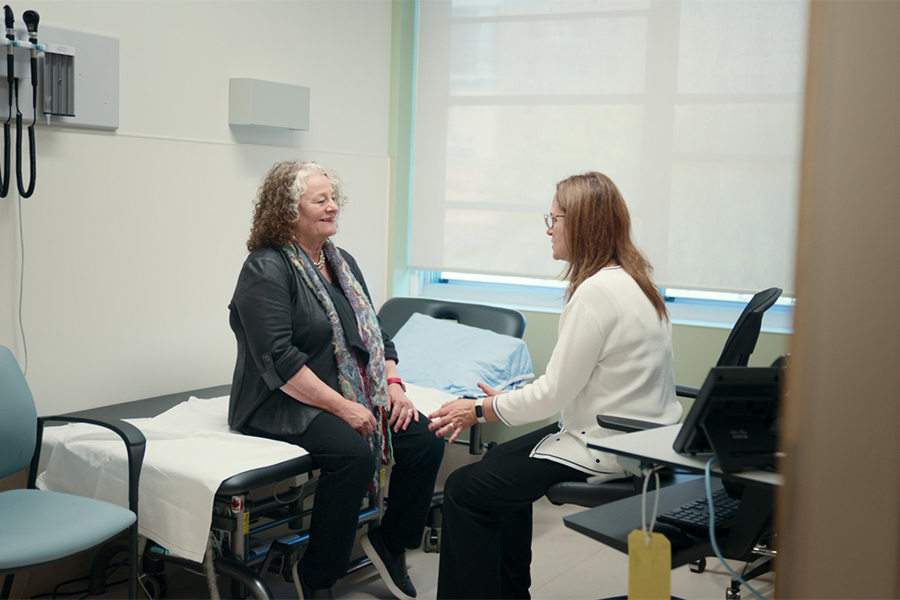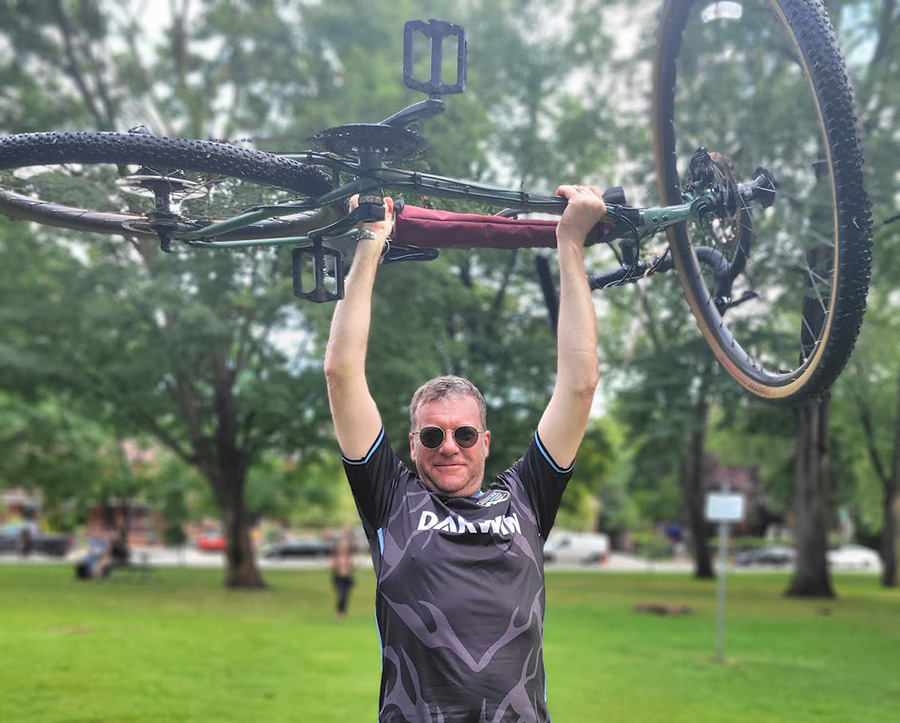
John Richmond was able to get back to where he never thought he would be – on his bicycle.
And he credits comprehensive stroke treatment at UHN for getting him there.
An avid sports enthusiast, John was cycling home from work in December 2021 when he hit a patch of ice and fell, hitting his chin on the pavement and snapping his head back. The accident led to a stroke – instantly altering life for the then-53-year-old husband, father and social worker.
In the immediate aftermath of the fall, John thought he might walk away with only a bad headache and a destroyed bicycle. But two nights later, he woke with a throbbing headache, unable to move his left arm or leg and not speaking clearly.
“My partner knew right away that I was having a stroke,” says John, recalling the experience of an ischemic stroke – when the blood supply to part of the brain becomes blocked, preventing brain tissue from getting sufficient oxygen and nutrients.
“I thought, I might not make it, but I was determined to try.”
That resilience and positive attitude, along with the care John received at both Toronto Western Hospital (TWH) and Toronto Rehab, are the keys to him being where he is today – at home with his wife, spending time with his two children, back at work, and riding his bicycle just about everywhere.
“Stroke treatment is the ultimate team sport,” says Dr. Timo Krings, a diagnostic and interventional neuroradiologist, and at that time John had his stroke, Head of the Division of Neuroradiology at UHN and Site Chief of Medical Imaging at TWH.
Dr. Krings credits the entire team across UHN who provided care for John, both acute and rehabilitation.
“Following stroke care comes rehabilitation, and having the rehab institute in the same hospital network is a major benefit,” he says.
June is stroke awareness Month in Canada. Every year, more than 100,000 individuals across the country – roughly one every five minutes – experience a stroke.
When John was sent to the Emergency Department at TWH, UHN’s comprehensive acute stroke team was quick to provide care. John received a treatment called endovascular thrombectomy, a minimally invasive yet risky procedure involving the removal of a blood clot from a blocked artery in the brain, led by Dr. Krings.
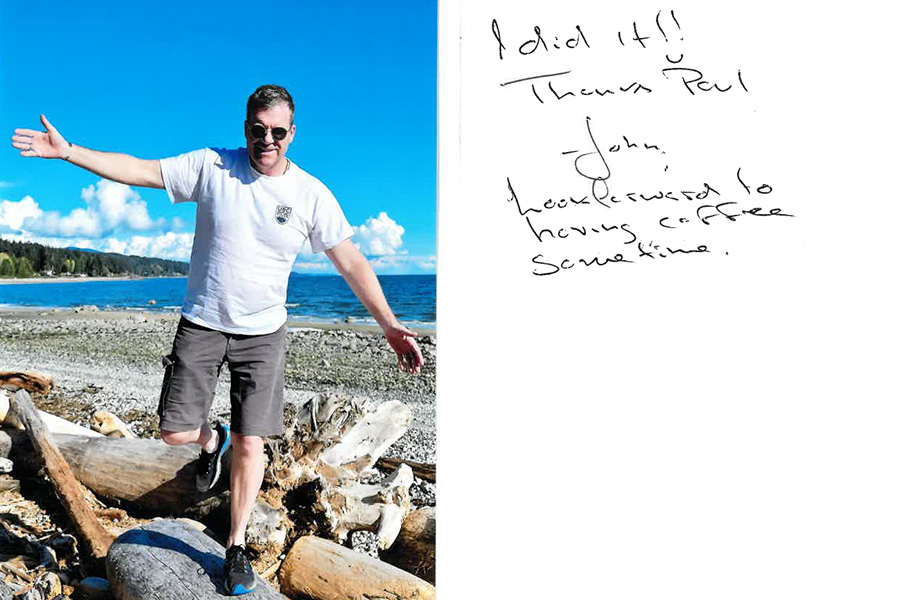
John had been using cycling as his main form of transportation around the city for 30 years but couldn’t return to the life he was used to following the surgery. As simple as his routine might have been, he needed to go back to the basics, and regain his independence for mobility.
Time was of the essence. Quickly after surgery, John was discharged from TWH to Toronto Rehab, where he began working with a team of rehabilitation professionals who developed an individualized treatment plan to help him work towards his self-identified and meaningful rehabilitation goals.
“There is strong evidence that early initiation of rehab after stroke is critical for optimizing long-term functional outcomes,” says Dr. Alexander Lo, Physiatrist and Medical Lead of Toronto Rehab’s stroke program.
Dr. Lo works closely with patients discharged from acute care to inpatient rehab at UHN. John was one of them.
“Working closely with TWH under the same hospital umbrella is a major benefit when it comes to transitioning patients to high intensity rehabilitation as soon as possible,” Dr. Lo says.
When admitted to Toronto Rehab, John was experiencing left neglect and weakness, decreased coordination, cognitive deficits, and swallowing difficulties. His immediate goals included re-learning how to walk independently without a gait aid and strengthening his left side.
One of his long-term goals included getting back to cycling, which has been a defining part of his identity since he was a student.
As a high-functioning individual, John’s biggest rehabilitative challenge post-stroke was starting with the smaller – yet critical – tasks, such as sit-to-stand transfers and walking up and down a flight of stairs, all of which would eventually lead to his larger, more meaningful goals.
“On a day-to-day basis, we don’t even realize how our brain is working at all times to coordinate our muscles and movements,” says Dr. Lo.
“After a stroke, activities that used to be automatic, like walking or brushing your teeth, can now require a deliberate and conscious effort.”
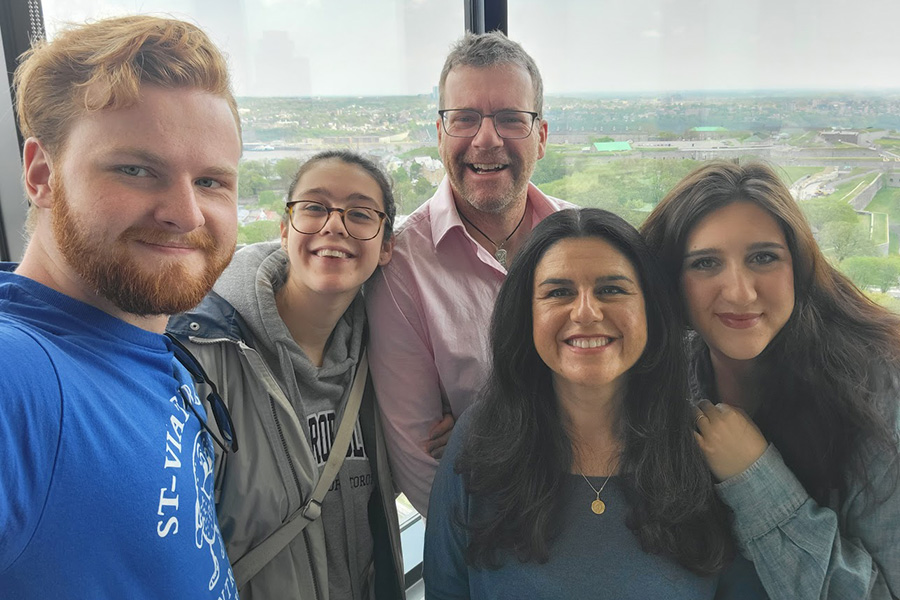
Forming a multidisciplinary circle of care around their patient, John’s therapy team, in partnership with John and his wife, got busy. For three weeks, John worked with the rehabilitation team to organize his day and rebuild strength and endurance. It was important for the team to meet John where he was to make this happen.
“You really need to listen to where a person is at, and what they’ve identified as an issue, or else it will be very difficult to be able to help them advance towards their recovery,” says Paul Asselin, a social worker at Toronto Rehab’s Inpatient Stroke Rehab Unit, who saw and worked with John daily, developing a positive working relationship.
“Paul was one of the people that I remember very clearly explaining to me that physical exercise would stimulate neural regeneration, which would be a key component to my recovery,” says John.
“He was instrumental in helping me develop a daily routine where I would get up in the morning, get dressed, shower, have my breakfast, and then get cracking on my rehabilitation.”
As time advanced, so did his recovery. While still an inpatient, John was ready to return to some work, such as responding to emails, and eventually began to use a stationary bicycle with guidance provided from his physiotherapist.
At the three-week mark, John was ready for discharge, having met – or surpassed – his inpatient rehab goals. He was walking independently without a gait aid, his left neglect and mobility had improved, and he was carrying out his activities of daily living mostly independently before transitioning to Toronto Rehab’s outpatient stroke rehabilitation program, where he worked with a different outpatient team of rehabilitation providers to achieve his higher-level goals.
Today, John has successfully returned to the life and activities he finds most meaningful. He’s back at home with his family and was able to get back to work and cycling within six months of discharge.
“I went back to about 95 per cent of where I was prior to my stroke, which is unbelievable,” says John.
“The team at UHN was instrumental in helping me understand how to get there.”
By Catherine Danko
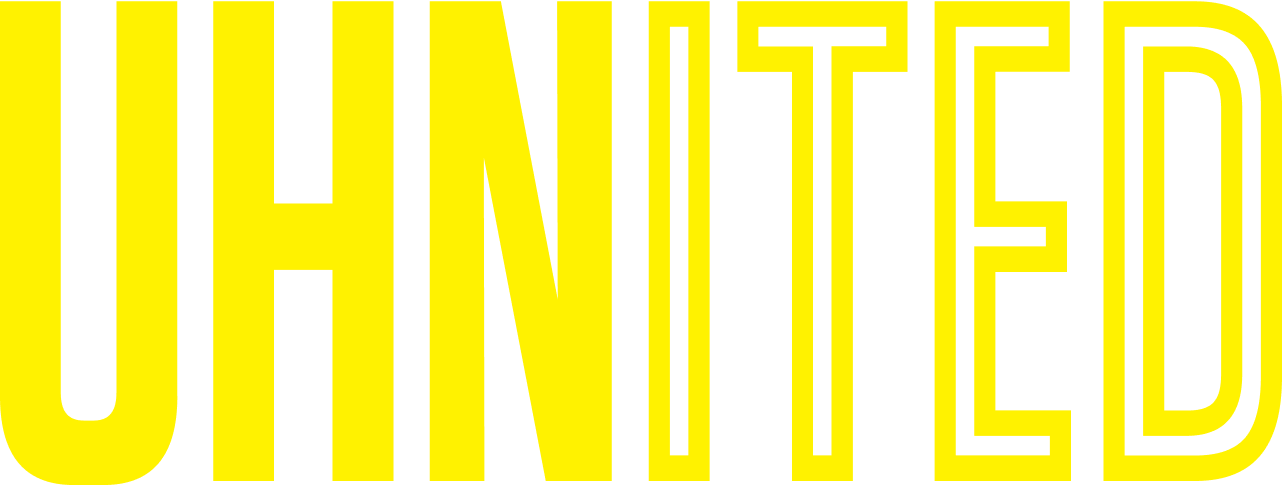
No one ever changed the world on their own but when the bright minds at UHN work together with donors we can redefine the world of health care together.
